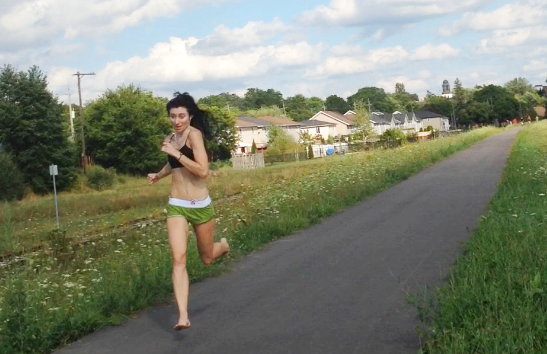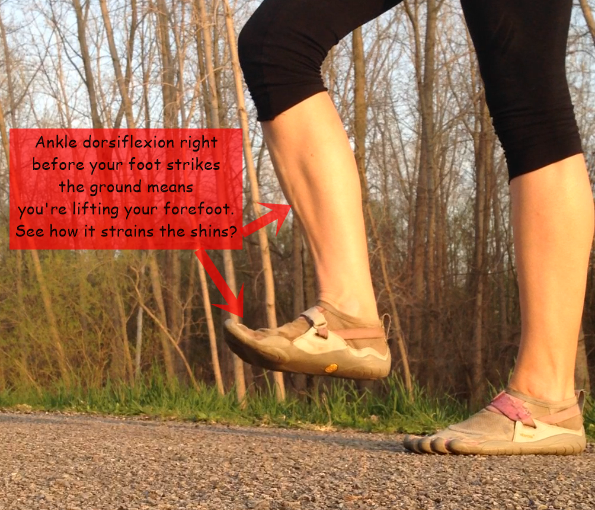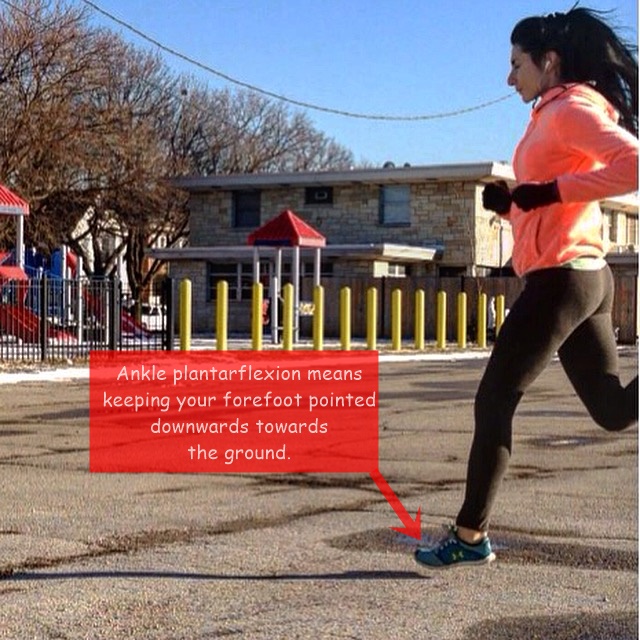Thanks to barefoot running, you are less likely to suffer knee injuries running without shoes than running in shoes. But what about shin splints? Barefoot running is supposed to be a cure-all for lower leg injuries, right?
In the beginning stages of practicing barefoot running, some may experience minor shin pain. If you are experiencing shin splints from barefoot running, here’s the potential reason why this is such.

Shin Splints From Barefoot Running
A study by Powell et al. 2014 demonstrated a potential link between inexperienced barefoot runners with high arches and shin pain in that shod runners with high arches who ran barefoot had a less plantarflexed ankle at touchdown, suggesting that the ankle was in a more dorsiflexed position. Ankle dorisflexion at touchdown during running is one of the main causes of shin splints, and for some reason, runners with high arches have the impulse of dorsiflexing their ankle when the foot strikes the ground. Therefore, shin splints may be a potential injury pattern in high-arched, new barefoot runners.
The picture above shows an example of ankle dorsiflexion, and I’ve written extensively on the action because dorsiflexing the ankle at touchdown during running is strongly implicated in many running injuries.
So, what’s the solution? Avoiding shin splints when running barefoot is a strategy that you can easily implement, and it doesn’t involve stretching or ice therapy.
Luckily, if you are a high-arched runner, you can easily avoid shin splints by making the conscious effort of not lifting your forefoot before your foot strikes the ground, like in the picture shown directly above. Doing this will give you less ankle dorsiflexion and more ankle plantarflexion which is what you want to reduce the mechanical burden on the shin muscles.
More on Barefoot Running:
Best Books on Barefoot Running
My Favorite Barefoot Running Websites
Fix Your Bunions by Running Barefoot
How Running Barefoot Improves You Foot Strike
References:
Powell et al. Ankle work and dynamic joint stiffness in high- compared to low-arched athletes during a barefoot running task. Human Mov Sci, 2014, 34, 147-156.
Bretta Riches
BSc Neurobiology; MSc Biomechanics candidate, ultra minimalist runner & founder of RunForefoot. I was a heel striker, always injured. I was inspired by the great Tirunesh Dibaba to try forefoot running. Now, I'm injury free. This is why I launched Run Forefoot, to advocate the health & performance benefits of forefoot running and to raise awareness on the dangers of heel striking, because the world needs to know.
Latest posts by Bretta Riches (see all)
- Heel Strike Running Causes Slipped Discs - 25/04/2024
- How to Train Yourself to Not Heel Strike When Running - 24/04/2024
- Cushioned Running Shoes Found to Be Bad for Ankles - 23/04/2024


